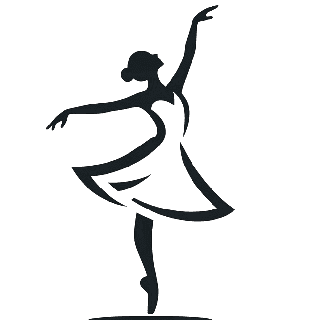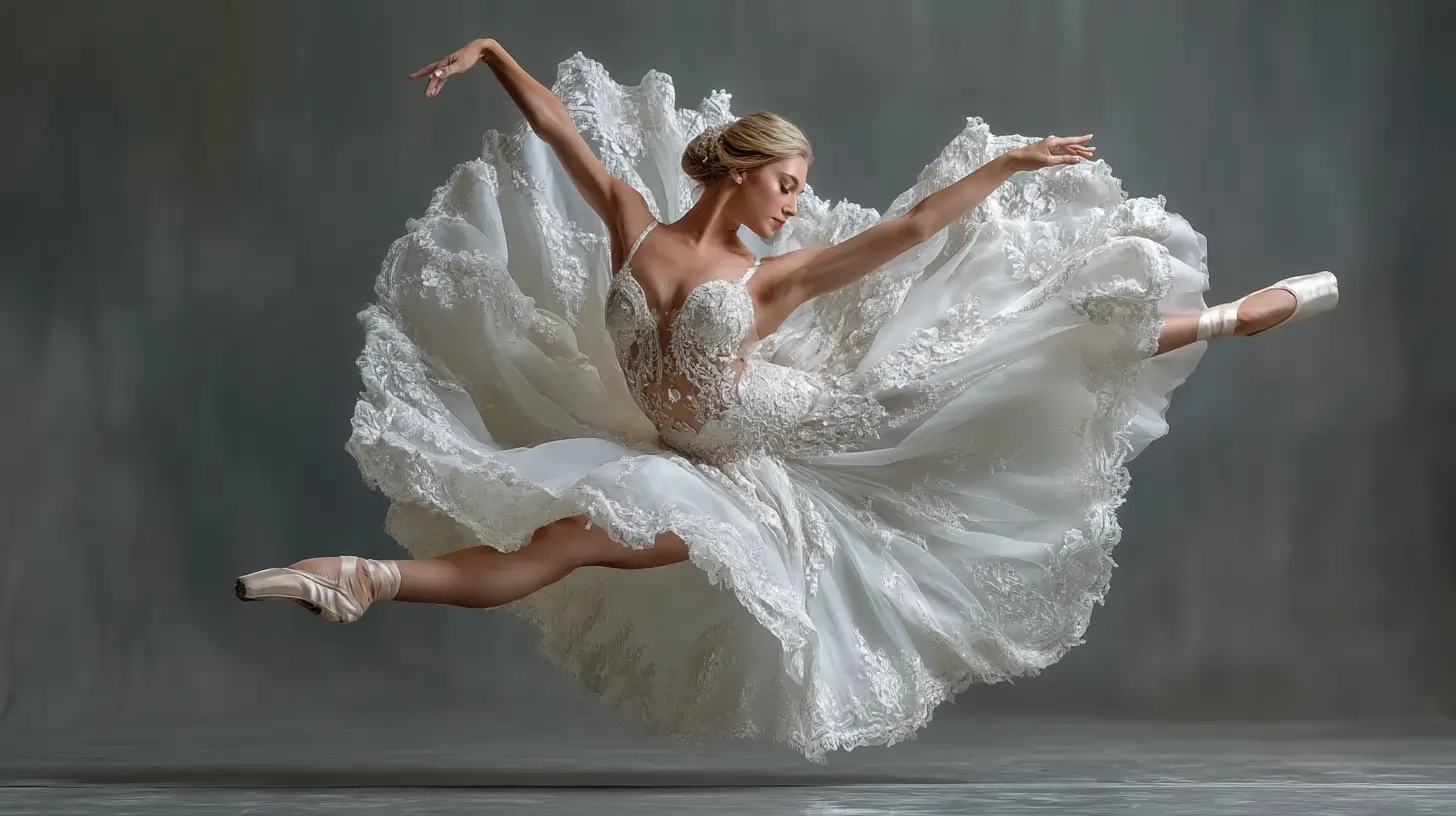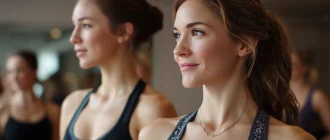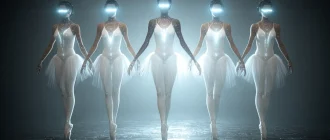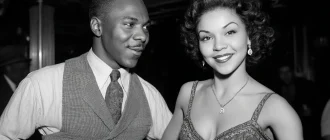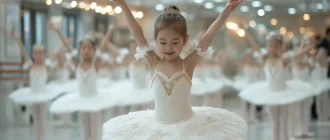Acting is crucial in ballet because it enhances emotional expression, storytelling, and audience engagement, especially when using pointe shoes taught in school, highlighting the importance of acting in ballet. It enables a ballerina to convey deeper emotions and bring characters to life, making performances more compelling. This article will explore how acting skills enrich ballet performances, connect dancers with their audiences, and improve character portrayals.
Key Takeaways
- Integrating acting skills into ballet enhances emotional expression, allowing dancers to connect more deeply with their audience and convey compelling narratives.
- Understanding character motivations and employing improvisation techniques are essential for dancers to portray complex characters authentically and dynamically.
- Combined with acting classes, regular practice of visualization helps ballet dancers build confidence, reduce performance anxiety, and improve overall performance quality. This is crucial for a dancer’s career, allowing them to master demanding performances and gain recognition in the ballet community.
Art de Podcast
Emotional Expression in Ballet
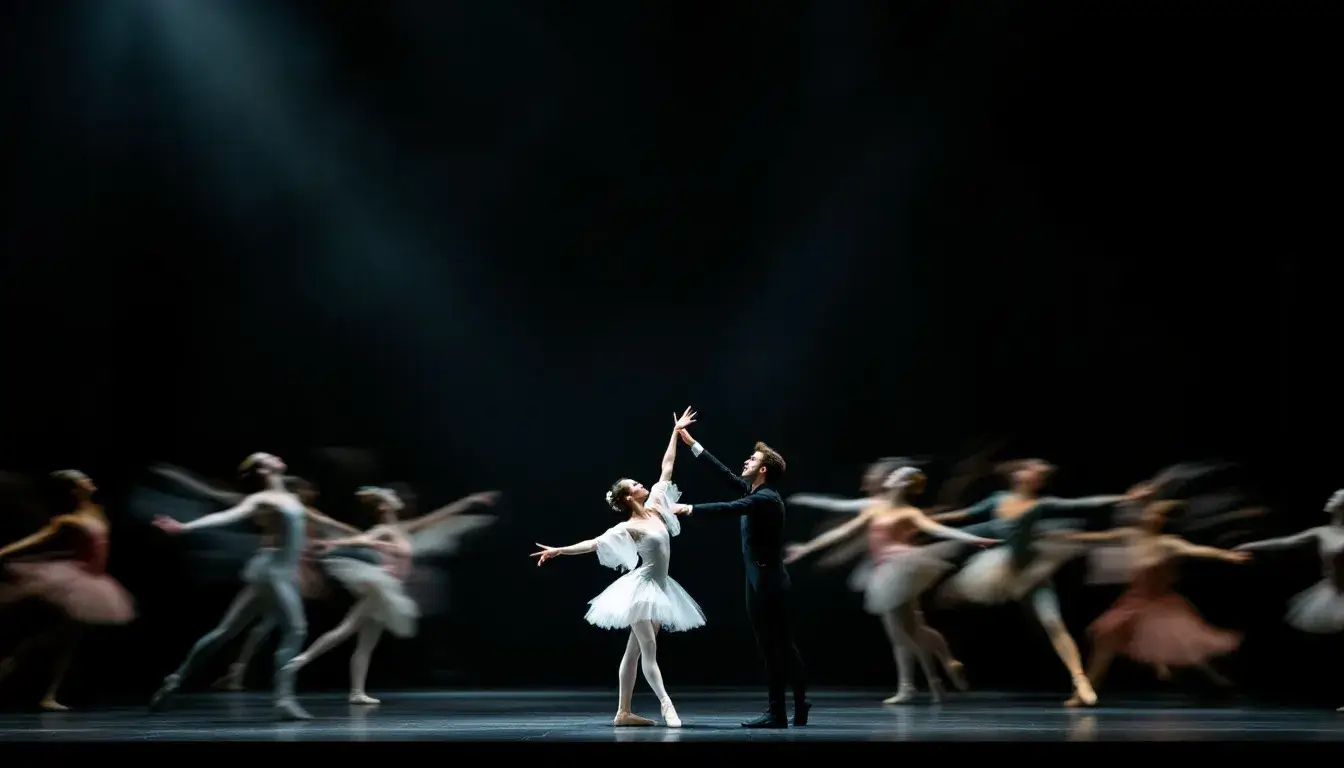
Ballet’s ability to convey emotions stems from its movement, music, and storytelling combination. Integrating acting into ballet at school helps dancers convey deeper emotions, enriching their performances and allowing them to connect more profoundly with their audience. Actor training can enhance dancers’ storytelling abilities, enabling them to bring characters and narratives to life through their movements.
Dancers from the American Ballet Theatre have shared that their acting skills significantly enhance their ability to portray emotional depth in performances. This emotional depth draws the audience into the narrative, making the performance more compelling and memorable.
Maintaining a focused mindset during performances is crucial for dancers to preserve emotional depth and technical precision, allowing them to feel comfortable, especially during challenging segments.
Embracing acting allows dancers to explore new, creative avenues and expand their artistic expression through dancing.
Connecting with the Audience
Connecting with the audience enhances engagement and makes performances more compelling. Successful ballet dancers often emphasize acting to grow as performers and create a deeper connection with the audience, while stepping out of their comfort zone. Embodying characters and conveying emotions through expressions makes performances more relatable and impactful.
Dancers from the American Ballet Theatre report that acting skills have significantly improved their ability to connect with audiences emotionally. Incorporating acting techniques into daily ballet practice enhances dancers’ abilities to convey emotion and tell stories through their movements on pointe.
Practicing performance scenarios regularly helps dancers develop instinctual reactions and emotional expressions during rehearsals on stage, for example. Even to an untrained eye, this creates a feeling of authenticity that is realized. The rehearsal director plays a crucial role in this process.
Portraying Complex Characters
Understanding a character’s emotional landscape is crucial for authenticity in ballet performances. Dancers should research their characters’ specific characteristics and traits to create a more authentic portrayal. Dancers need to realize the deeper aspects of their characters, including their background and emotions, to enhance their portrayal. This understanding allows dancers to portray complex characters with depth and nuance, making their performances more engaging and believable.
Improvisation can help dancers develop their unique style by encouraging them to explore movement choices. Dancers can create more dynamic and compelling performances by experimenting with different ways of expressing their characters’ emotions and personalities. This exploration of character and emotion elevates a dancer’s artistry and connects them more deeply with their audience.
Enhancing Character Development
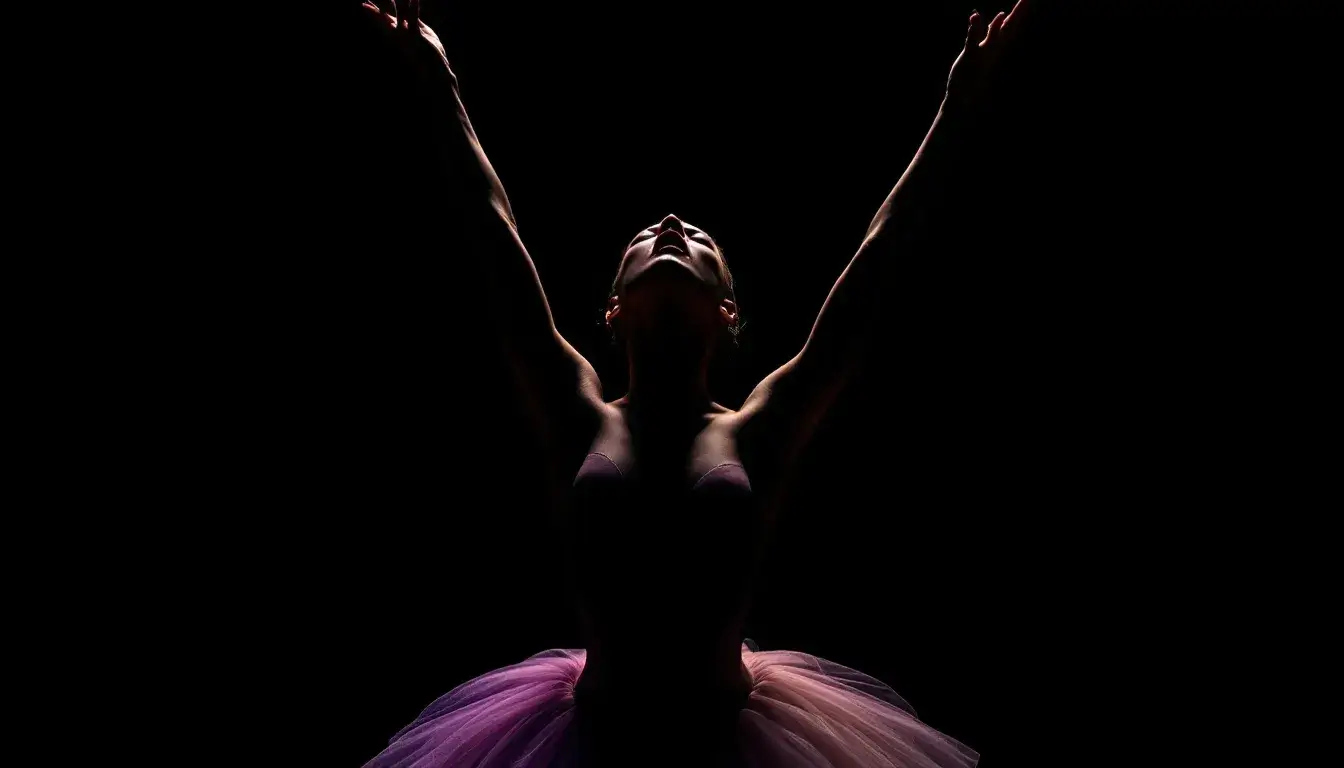
Fully embodying a character requires dancers to fully immerse themselves in the role and portray the character’s story, personality, and mannerisms. Understanding characters’ motivations and emotional depth is crucial for effective portrayal, allowing dancers to create more authentic and impactful performances.
A rehearsal director and choreographer play a significant role in a dancer’s character development and performance, guiding them to convey complex narratives through movement and artistic expression.
Exploring character roles helps dancers develop confidence in creating characters. Acting classes help explore identity, leading to increased confidence during performances. Creating characters allows dancers to tell stories and have fun with their roles.
Research and Preparation
Understanding a character’s motivations and background enhances a dancer’s ability to portray them convincingly. Christopher Ruud emphasized that knowing a character’s backstory is crucial for effectively portraying complex roles. Analyzing the historical context of a character provides valuable insights that inform performance choices.
Dancers should prepare their lines and character backgrounds before attending acting classes to maximize learning. Integrating scene analysis and character study into daily ballet practice helps dancers embody roles effectively.
Improvisation Techniques
Group exercises with emotions or characters on index cards help ballet dancers improve their improvisation skills. Regularly practicing acting exercises allows dancers to break away from technical constraints and focus more on character and storytelling. Incorporating natural body language related to emotions helps dancers tap into their instincts while performing.
Dancers can convey various interpretations of the same things through improvisation, finding personal expression amidst learning rigid techniques.
Dancers unsure about their character portrayal should seek feedback from teachers and fellow dancers. Participating in improvisational activities helps dancers become more comfortable with mistakes and reduces anxiety.
Building Confidence on Stage
Engaging in acting lessons significantly reduces stage fright by fostering a stronger sense of self-assurance in dancers. Acting techniques help dancers develop self-assurance during performances. Many acclaimed ballet dancers emphasize how integrating acting enhances overall performance quality.
Taking an acting course can significantly reduce stage fright and enhance performance quality by providing tools for self-exploration and deepening emotional expression.
Building confidence on stage involves stepping out of one’s comfort zone and embracing the vulnerabilities of performing. Developing acting skills helps dancers feel more comfortable and confident in their roles, enabling them to deliver more powerful and authentic performances.
Overcoming Performance Anxiety
Reflecting on how you want the audience to feel and understand your character shifts your mindset and reduces performance anxiety. Viewing expression as liberating and using mantras like ‘Change your head and change your costume’ and ‘Nothing to prove, everything to share’ helps dancers feel comfortable and more at ease on stage.
Tapping into one’s inner child can also help reduce performance anxiety and enhance authenticity, allowing dancers to connect with their youthful joy and natural movements.
Alessa Rogers found that improvisational comedy reduced her fear of mistakes and enhanced her confidence on stage, a pun intended. Embracing the possibility of errors and focusing on the joy of performing helps dancers overcome anxiety and deliver more confident performances.
Visualization Practices
Playing performance music through headphones, closing your eyes, and visualizing the entire piece can significantly reduce anxiety before a performance. Breathing exercises and visualization help dancers mentally prepare for their roles. Establishing a pre-performance routine with warm-up exercises and positive visualization can help you manage anxiety effectively.
Watching other performances can provide valuable inspiration and insight, improving one’s visualization practices.
Visualization techniques play a crucial role in helping dancers mentally prepare for their roles and performances. Imagining specific performance scenarios in detail enhances focus and readiness, ultimately improving the overall quality of performance. This idea makes a significant contribution to their success.
Collaboration with Choreographers
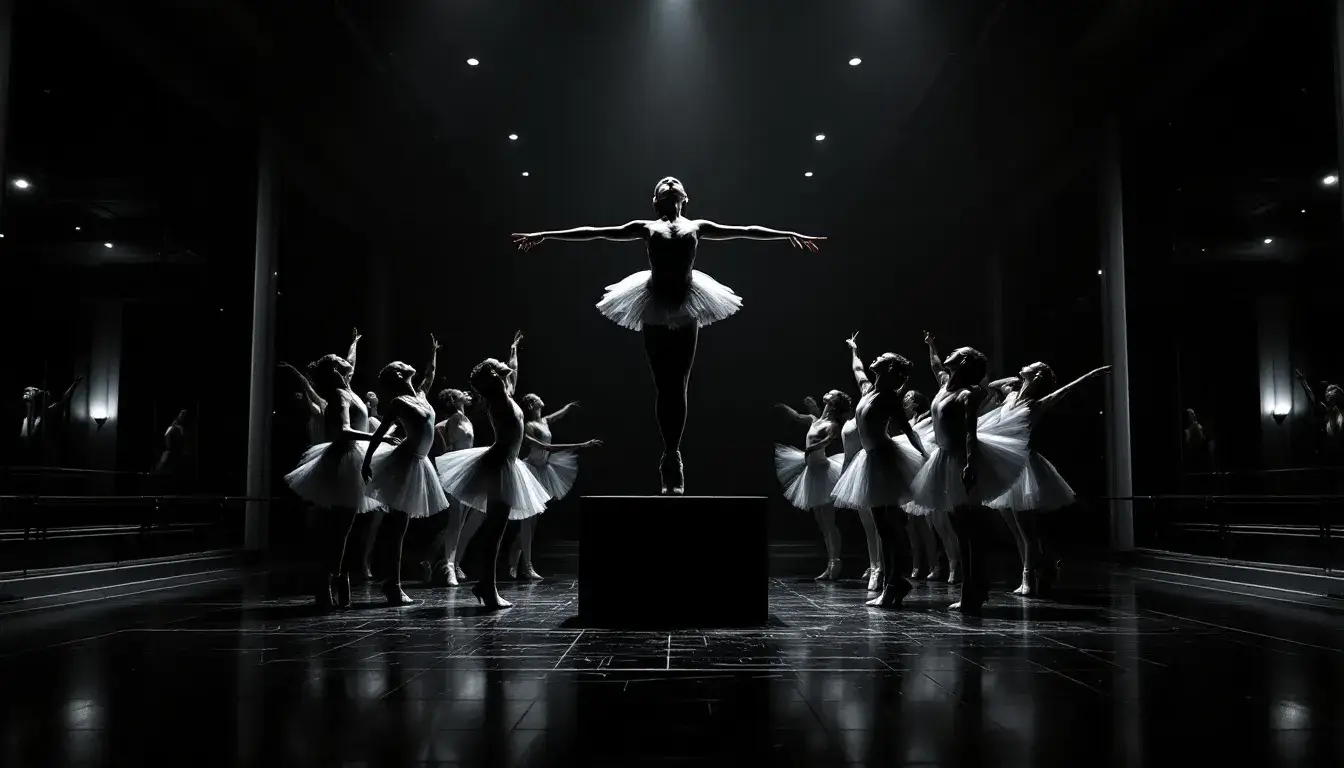
Acting skills enhance a dancer’s ability to interpret the choreographer’s vision, making the collaboration more dynamic and effective. Effective collaboration in choreography is seen as a team effort rather than a one-sided direction. Understanding and embodying the choreographer’s vision allows dancers to create more authentic and impactful performances.
Collaboration between dancers and choreographers is essential for ensuring that artistic goals are met and the intended message of the dance is communicated successfully. Clear dialogue and mutual understanding are key components of this collaborative process. Additionally, collaboration can lead to exploring different forms of artistic expression, enriching the overall performance.
Understanding Choreographic Intent
Understanding the choreographer’s vision allows dancers to create more authentic and impactful performances that resonate with the intended emotional journey. Grasping the choreographer’s intent is crucial for delivering performances that resonate with authenticity and emotional depth. Understanding the choreographer’s vision and the matter of each element is vital for authentic performance.
Acting skills enable dancers to interpret the emotional nuances of choreography, fostering a deeper connection with the choreographer’s vision. Understanding the emotional and narrative context behind the choreography is essential for authentic performance.
Effective Communication
Clear dialogue between dancers and choreographers is vital to ensuring that artistic goals are met and the intended message of the dance is communicated successfully. Clear communication enhances collaboration, making it obvious that artistic intentions are understood and executed effectively.
The importance of leg strength and positioning in executing difficult choreography cannot be overstated, as it directly impacts a dancer’s ability to perform technical movements and communicate effectively with the choreographer.
Open dialogue between dancers and choreographers fosters trust and ensures the artistic vision is conveyed. This communication is essential for creating a creative relationship that encourages feedback and collaboration.
Real-Life Examples from Renowned Dancers
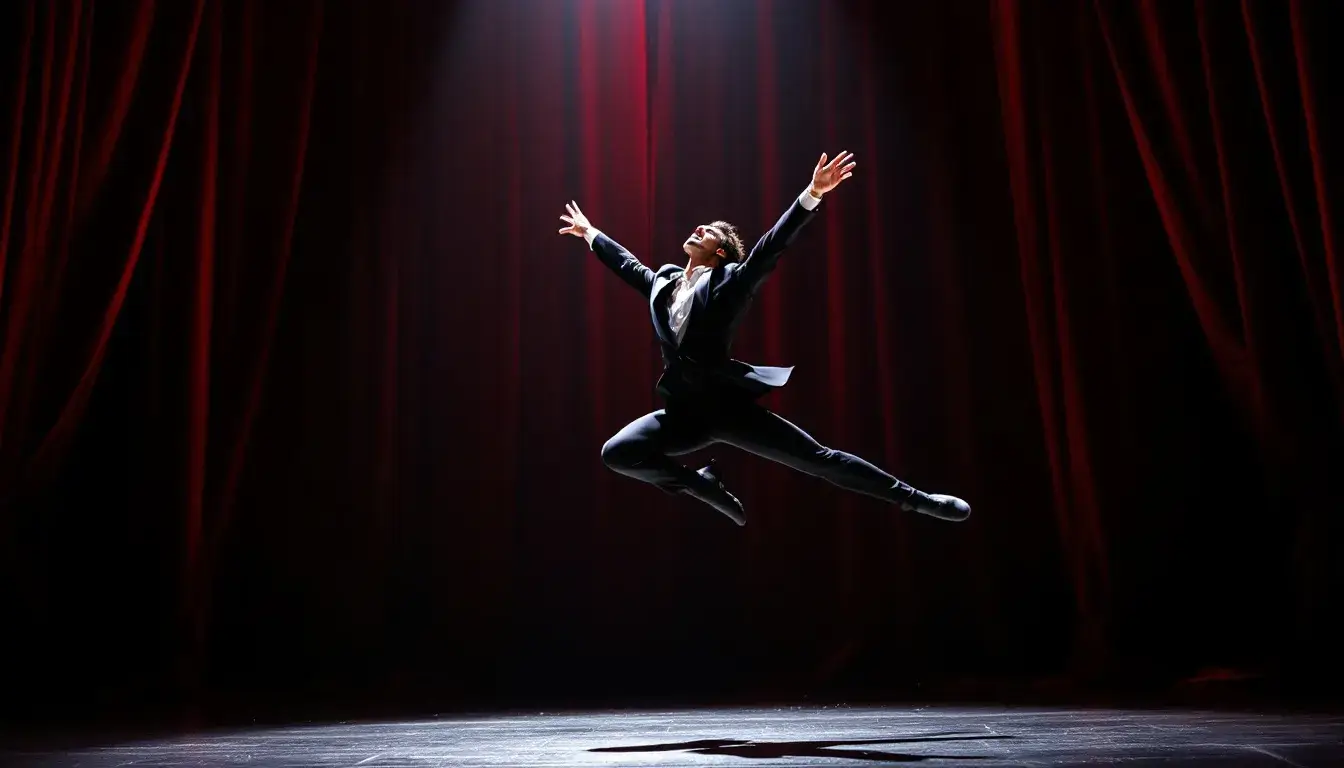
Integrating acting skills into ballet enhances emotional expression, drawing the audience further into the narrative. American Ballet Theatre stars demonstrate that strong acting abilities can deepen the emotional resonance of classical ballets, transforming their performances into profound storytelling experiences.
Roles like ‘Princess Aurora’ in ‘The Sleeping Beauty’ are pivotal for ballerinas, requiring technical and emotional mastery. Various renowned dancers reflect on their journeys, noting how mastering acting techniques improved their ballet performances and allowed them to listen to the difference in connecting more authentically with their audiences, using their legs to express emotion through pointe shoes, much like a ballet dancer or ballerinas who danced as a performer, giving their voice to the art of classical ballets in that moment, creating a unique form of expression alongside other dancers and actors in their career.
The blend of acting and classical ballet is essential for watching captivating performances that showcase the beauty and power of talent, leaving art and talent to linger in the audience’s minds long after the curtain falls.
American Ballet Theatre Stars
James Hay has performed in various character roles such as Cinderella, Don Quixote, Manon, and Still Life at the Penguin Café, demonstrating his versatility. His accolades include the Young British Dancer of the Year (2006), Lynn Seymour Award (2007), Prix de Lausanne (2007), and the Dame Ninette de Valois Most Outstanding Graduate award.
Performances like ‘The Sleeping Beauty’ are significant for dancers in showcasing their acting and technical skills. Integrating acting skills significantly enhances the performances of American Ballet Theatre dancers, making their portrayals more compelling and emotional. The success of dancers like James Hay encourages other dancers in the ballet community to prioritize acting skills and deepen emotional engagement in their performances.
Inspirational Journeys
Many renowned dancers say that their ability to act has been crucial in transitioning between various roles throughout their careers as dancers. Their dedication to mastering dance and acting has allowed them to create richer, more nuanced performances that resonate with audiences.
Roles in ‘Swan Lake’ challenge dancers to tap into their identity and emotions, enhancing their performance. Portraying complex characters like Prince Siegfried requires a deep emotional understanding and technical mastery, making the performance both a technical feat and a profound acting exercise that can also be enjoyable.
These inspirational journeys highlight the importance of integrating acting skills into ballet training. Embracing acting allows dancers to explore new creative avenues and expand their artistic expression, ultimately enhancing the overall quality of their performance in every moment.
Practical Tips for Ballet Dancers
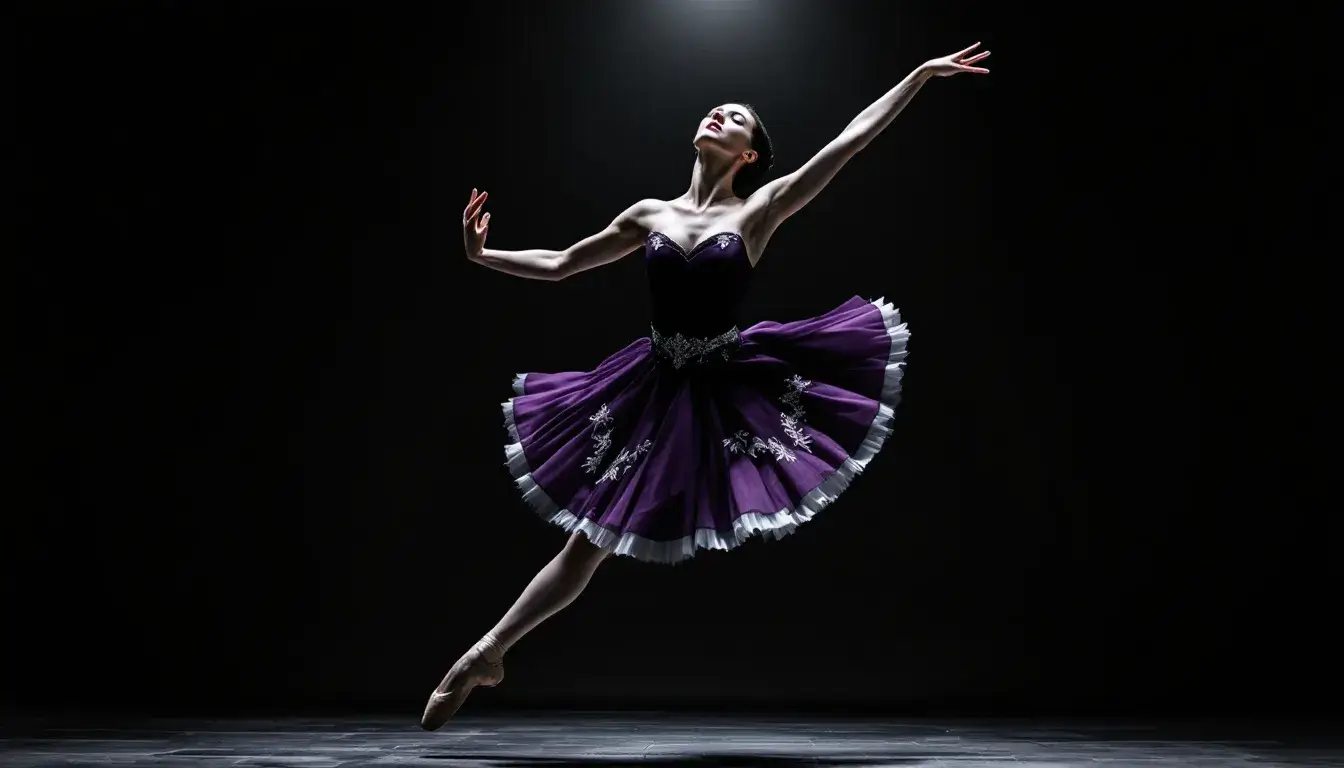
Listening to performance music while visualizing the entire routine enhances a dancer’s focus and readiness. Effective visualization involves imagining specific performance scenarios in detail to strengthen confidence and focus. Incorporating soundtracks or performance music during visualization enhances dancers’ mental preparation and focus.
An acting course can significantly enhance a dancer’s artistry and performance quality. Visualization techniques are essential for ballet dancers, helping to improve their acting skills and overall performance quality. Incorporating this good technique into daily routines allows dancers to develop a more expressive and nuanced performance.
Acting Classes for Ballet Dancers
Acting classes enable dancers to confront fears and channel emotions into their performances, enriching their storytelling. Acting classes often require students to perform scenes before peers, allowing for constructive feedback like dance training.
Preparation for acting classes often includes scene assignments and requires dancers to memorize lines and analyze their characters before the first class. Community theater provides ballet dancers valuable insights into theater production and acting techniques.
Daily Practice Routines
Incorporating acting techniques into daily ballet practice is essential for developing a more expressive and nuanced performance. Daily routines can include exercises such as character portrayal, improvisational skills, and emotional expression to strengthen a dancer’s acting abilities.
Watching other performances can provide valuable inspiration and insight into character portrayal and technical execution, improving one’s practice routines.
Participating in acting classes and workshops specifically designed for ballet dancers can further refine their acting skills and improve the overall quality of their performance.
| Product (Amazon US) | User rating† | Why it’s relevant for ballet acting & expression |
|---|---|---|
| “Acting for Dancers: Dancing with Intention, How to Be a Dance Storyteller!” (J. Alex Brinson) | ★★★☆☆ 3.0/5 (≈5 reviews) | A quick, beginner-friendly workbook that connects basic acting tools—motivation, stakes, inner monologue—to dance phrases so you can start telling clearer on-stage stories. |
| “Dance Imagery for Technique and Performance” (Eric Franklin, 2nd ed) | ★★★★★ 4.9/5 (≈76 ratings) | 600+ imagery exercises that help dancers embody emotion, shape dynamics, and overcome performance anxiety—ideal for polishing the expressive details. |
| “The Six Questions: Acting Technique for Dance Performance” (Daniel Nagrin) | ★★★★½ 4.5/5 (≈6 ratings) | A classic method that asks six character-building questions (Who? What? Where? When? Why? How?)—perfect for digging into the narrative and character motives discussed in the post. |
| Capezio Women’s Junior Footlight Character Dance Shoes | ★★★★☆ 4.2/5 (≈1,339 ratings) | Low-heeled, flexible shoes are used in story ballets and dramatic sections, where expressive walking and mime replace pointe work and help translate acting choices into confident stage movement. |
We’ll summarize the article’s key points and emphasize the importance of integrating acting skills into ballet. This section will inspire the reader to take action and incorporate the insights and tips provided to make their practice more enjoyable.
Frequently Asked Questions
How can acting skills enhance a ballet dancer’s performance?
Acting skills significantly enhance a ballet dancer’s performance by enabling them to convey deeper emotions and create more authentic character portrayals, which fosters a stronger connection with the audience. This emotional depth elevates the overall impact of the dance.
What are some practical ways for ballet dancers to incorporate acting into their daily practice?
Incorporating acting into daily practice can be effectively achieved by taking acting classes, engaging in improvisation techniques, and using visualization practices to prepare for performances mentally. These methods enhance a dancer’s expressiveness and emotional connection to their art.
Can acting help reduce performance anxiety for ballet dancers?
Acting can help reduce performance anxiety for ballet dancers by boosting their self-confidence and providing techniques to manage stress, allowing them to focus on enjoying their performance.
Why is collaboration with choreographers important for ballet dancers?
Collaboration with choreographers is essential for ballet dancers as it ensures the artistic vision is realized and the dance’s intended message is effectively conveyed. This partnership fosters clear communication and mutual understanding, vital for creative success.
Are there any renowned ballet dancers who have successfully integrated acting into their performances?
Indeed, renowned ballet dancers like James Hay from the American Ballet Theatre have successfully integrated acting into their performances, significantly enhancing their emotional engagement and portrayals. This integration highlights the importance of acting skills in ballet.
What is ballet mime, and how does it enhance storytelling on stage?
Ballet mime is a codified system of gestures derived from eighteenth‑century pantomime; by clarifying plot points—such as “love,” “fear,” or “royalty”—it lets dancers advance the narrative without words and keeps audiences oriented between extended dance passages.
How can a dancer improve facial expressions without sacrificing technique?
Start with the eyes: practise shifting your gaze among intimate, social, and long‑distance focus while linking the look to hands and feet. Short mirror sessions that fine‑tune eyebrows, jaw, and breath help avoid the “plastered smile” and let expression grow organically from movement.
Why is breathing considered vital for emotional expression in ballet?
Structured breathwork—such as box breathing—steadies the nervous system, tames adrenaline, and creates natural musical swells, freeing the torso for more authentic emotion in demanding variations or pas de deux.
What acting exercises translate well to daily ballet class?
Assign a clear objective to each combination (“persuade,” “protect,” “celebrate”) and weave in quick vocal warm‑ups or a one‑line monologue between barre sides to connect thought, breath, and épaulement without disrupting technique work.
How does studying the historical context of a role deepen character portrayal?
Reading original libretti, diaries, and reviews reveals period‑specific etiquette, tempo, and social stakes, giving roles like Giselle richer motivation than a generic “village girl” outline and guiding nuanced choices in gesture and timing.
Are there differences in acting approach between narrative and abstract ballets?
Story ballets demand fidelity to a fixed dramaturgy and mime vocabulary. At the same time, abstract works require dancers to invent an internal storyline or emotional arc, relying on musical cues and imagery to prevent a blank stage presence.
How can improvisation sessions boost a dancer’s dramatic range?
Tasks like letting one body part “lead” every movement or navigating a grid with only right‑angle turns force spontaneous decisions, uncovering fresh textures and emotions that later inform set choreography.
What are effective ways to manage audition nerves through acting techniques?
Replace self‑critical thoughts with the character’s objective, then use rhythmic breath patterns backstage; reframing adrenaline as energy for storytelling turns jitters into expressive power.
Which classic ballet roles are renowned for demanding exceptional acting skills?
Odette/Odile in “Swan Lake,” Juliet in “Romeo and Juliet,” and Carabosse in “The Sleeping Beauty” top coaches’ lists for their rapid mood shifts, psychological depth, and need for continuous character through technically taxing passages.
How can male dancers develop charisma and stage presence in character parts?
Exploring Laban effort qualities—using “slash” for villains or “glide” for princes—builds a varied physical vocabulary, while studying minimalist screen actors shows how controlled stillness can project authority across the theatre.
What tools can dancers use at home to refine their storytelling skills?
Smartphone video for self‑review, audio recordings of monologues to test timing, and a notebook for mapping objectives per eight‑count, keep character choices consistent between rehearsals.
How do character shoes influence body language compared to pointe shoes?
The low heel transfers weight through the full foot, enabling grounded walks, lunges, and comedic beats that pointe cannot; the altered centre of gravity instantly shifts a dancer’s on‑stage persona.
Can method acting principles be adapted safely for ballet rehearsals?
Using Stanislavski’s “magic if” and clear scene objectives can spark authenticity. However, extreme emotional recall should be tempered to avoid muscular tension; anchoring each exploration to breath and musical phrasing keeps technique intact.
How does empathy training offstage translate into more authentic performances?
Mirroring‑partner exercises and mindful observation sharpen dancers’ ability to read subtle cues, fostering genuine reactions and deeper audience connection once the curtain rises.
What should understudies focus on to capture another dancer’s character convincingly?
Break rehearsals into “lenses”: one day chart spatial patterns, another track facial timing and breath; annotate nuances beside music counts so the portrayal feels lived‑in when a last‑minute call arrives.
How can teachers integrate acting into technique classes for young students?
Assign short, familiar scenarios—like the party scene in “The Nutcracker”—and prompt students to explore status, relationships, and emotion between tendus, laying dramatic foundations alongside technical ones.
